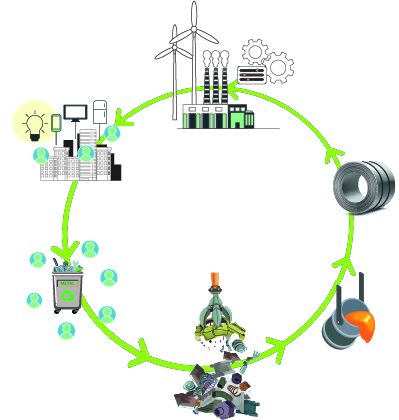Environnmental impact
Pdf downloadThe stainless steel industry has become a key player in the effort to minimise the environmental impact of its production process. To move towards sustainability, the industry has implemented several innovative strategies in their processes:
- Use of recycled materials: increasing the amount of stainless steel scrap in production reduces the need to extract new resources and reduces energy consumption and CO₂ emissions.
- Energy efficiency improvements: adopting more efficient technologies and renewable energy sources reduces the carbon footprint of stainless steel production.
- Waste management: implementing advanced waste treatment systems ensures that the generated sub-products are managed safely and effectively.
- Clean technologies: developing manufacturing methods that generate fewer emissions and use fewer natural resources.
- Encouraging the use of good practices during the production process is important, but it is not the only way that stainless steel stands out as a sustainable material.
It is a material that can be fully recycled. This means that once products made from stainless steel come to the end of their useful life, they can be melted down to create new applications without losing their original properties. This recycling process conserves natural resources and reduces the need to extract and process new materials. The ability of stainless steel to be infinitely recycled without losing its properties makes it a fundamental part of this approach.
It can be reused without losing its mechanical properties. The reuse of stainless steel, different from the recycling process, reduces the need to produce new materials. In this way we reduce the use of resources, the generation of waste and the energy consumption required for treatment.
The stainless steel industry is showing that it is possible to be environmentally conscious and competitive at the same time. Through innovative practices and reduction of environmental impacts, companies in this industry are leading the way towards a sustainable future. And you, do you use materials for the future?

